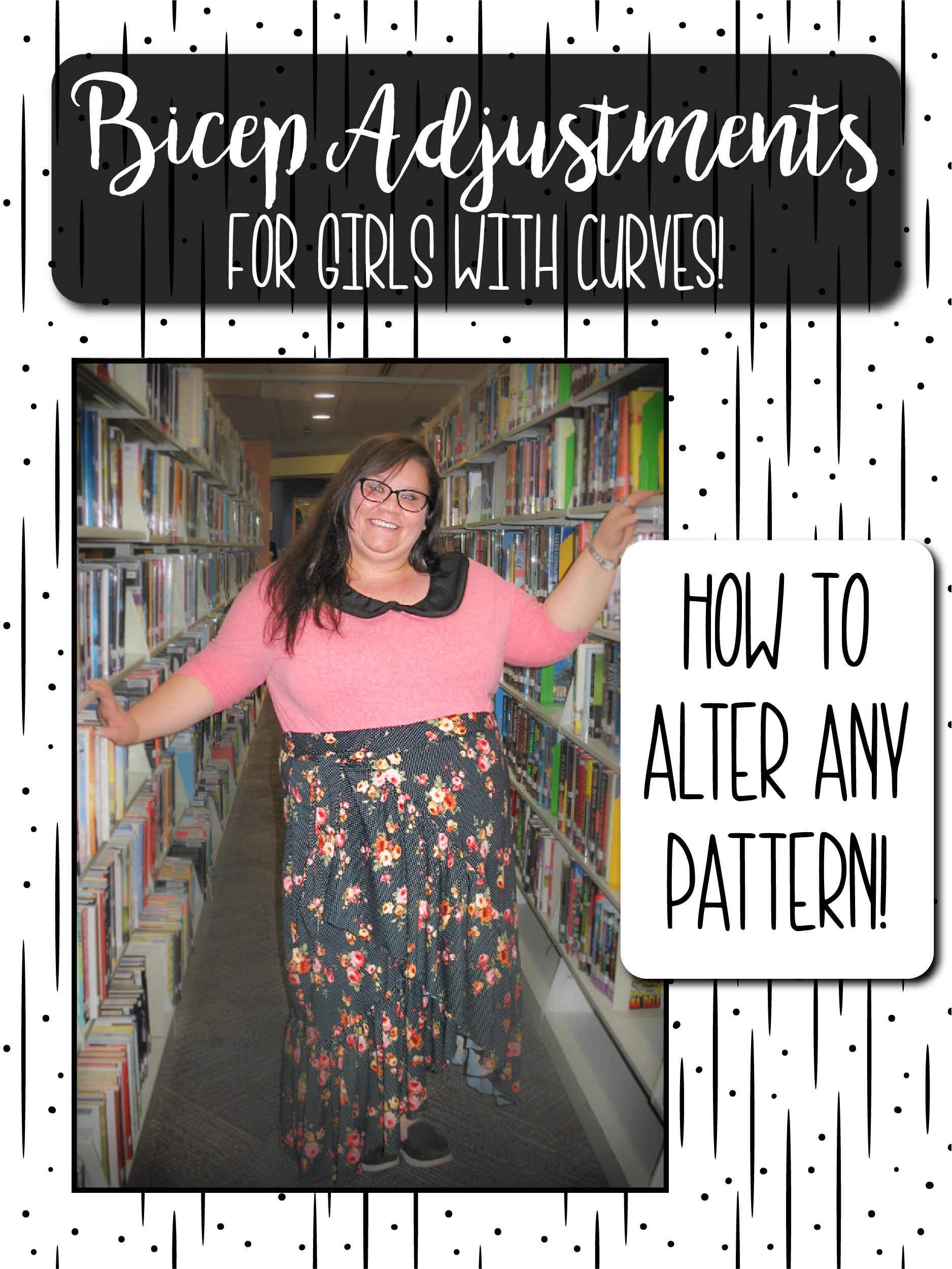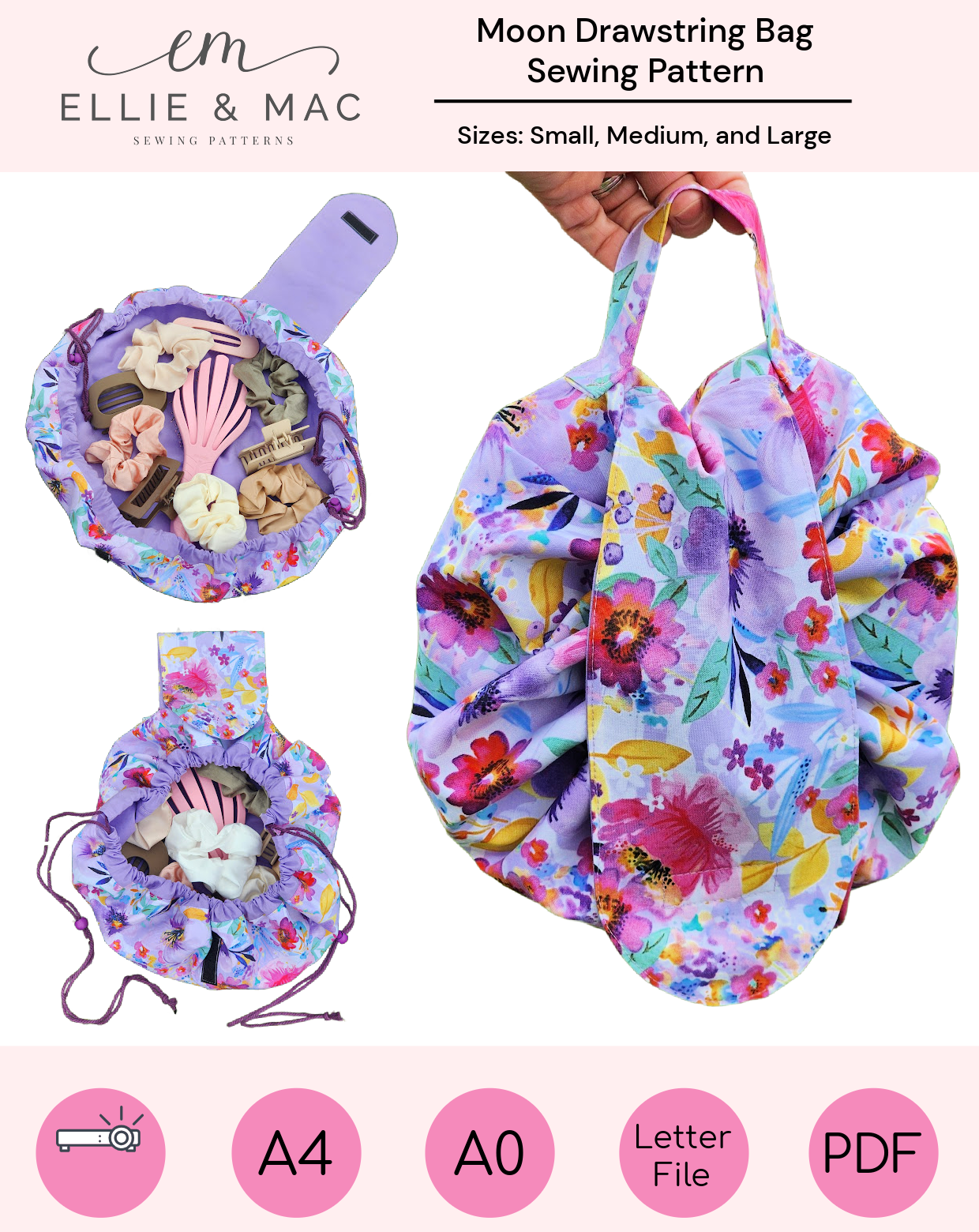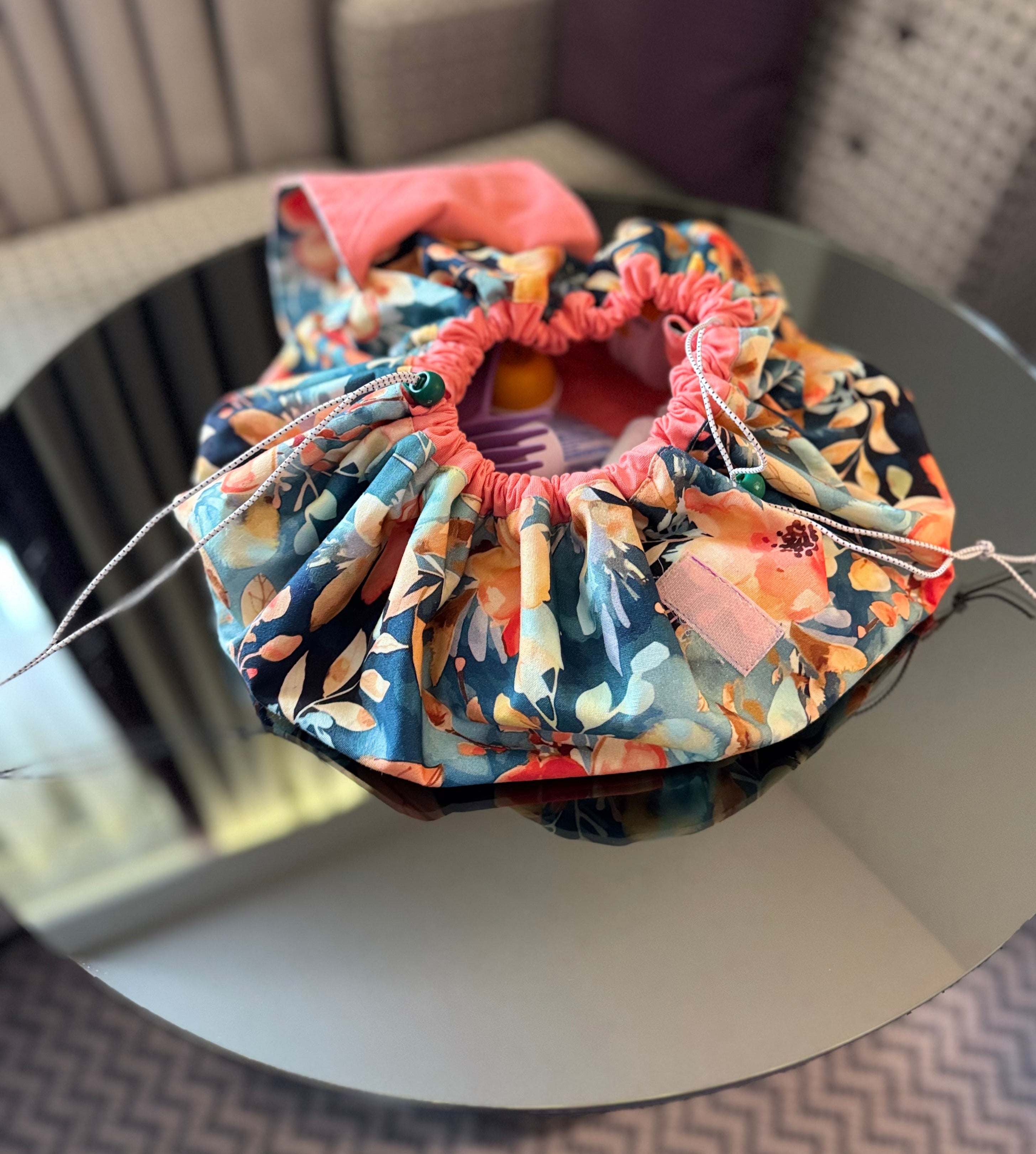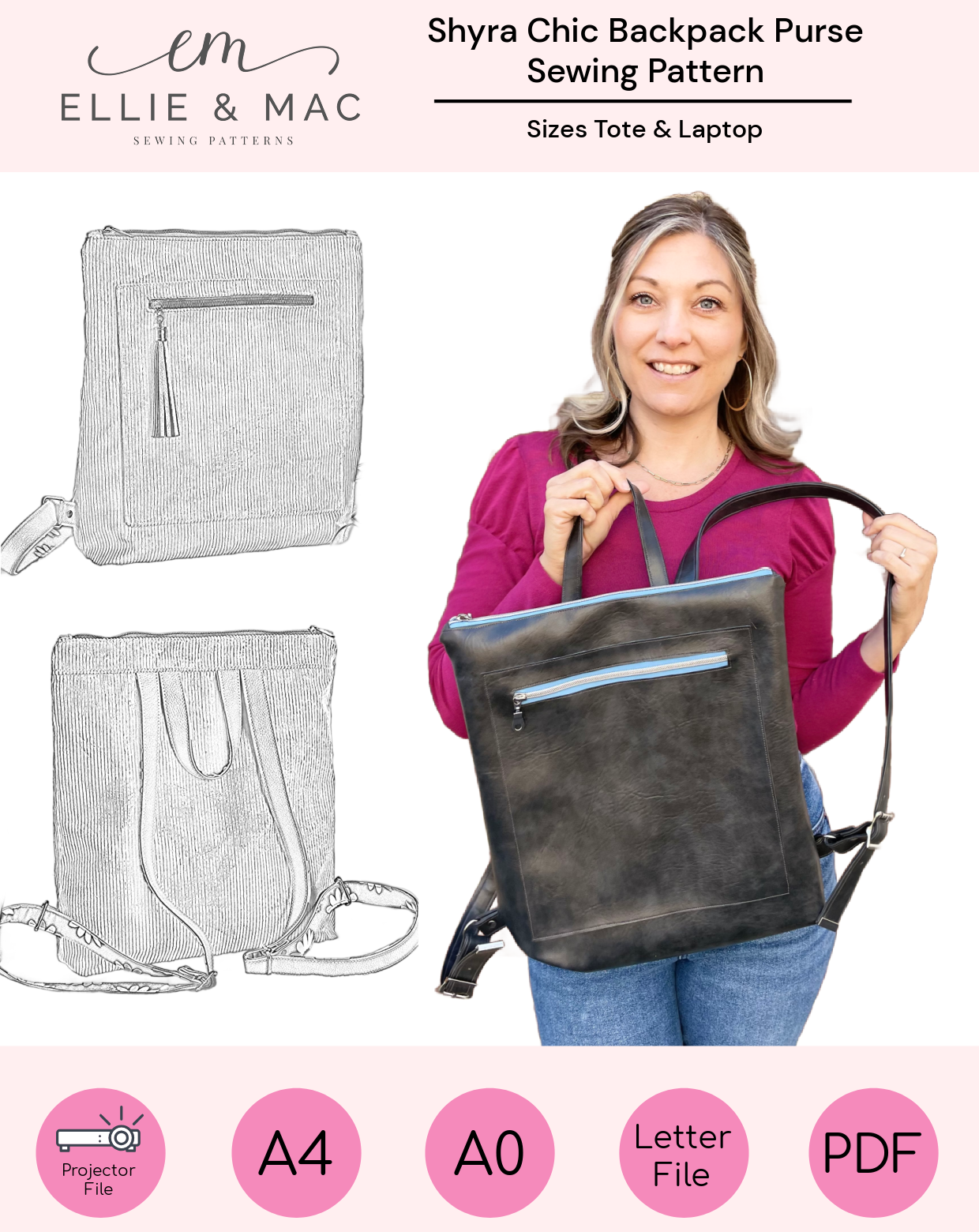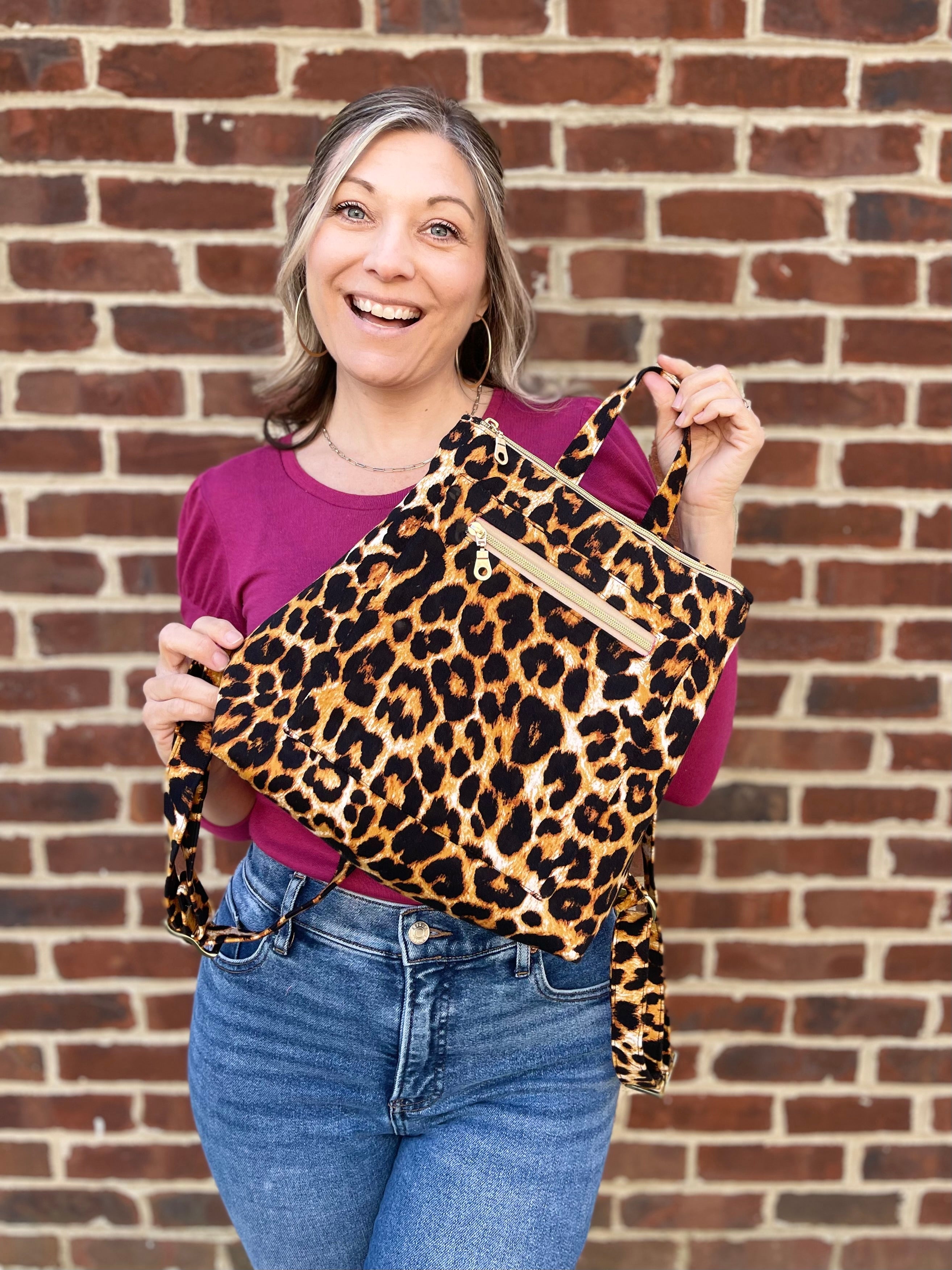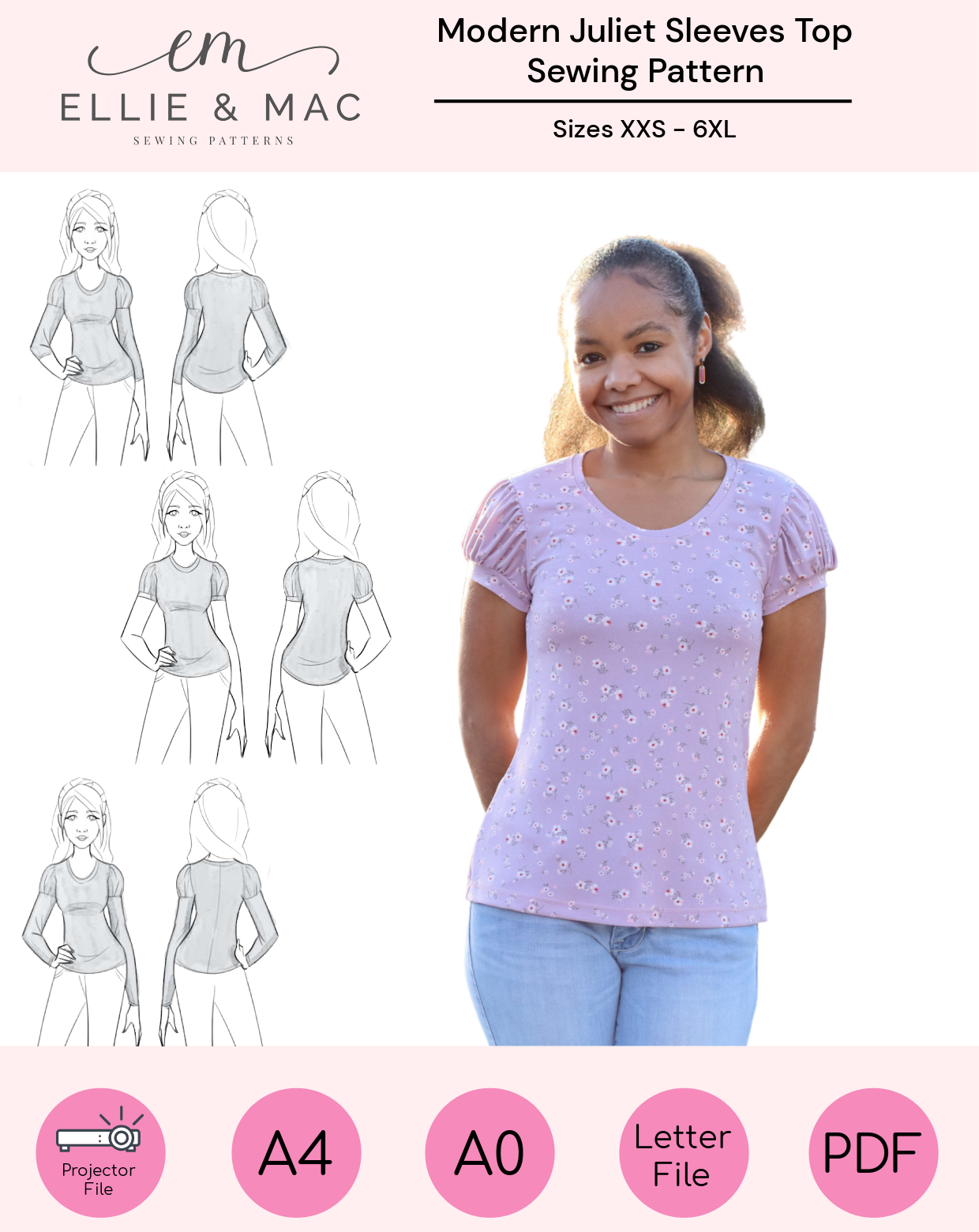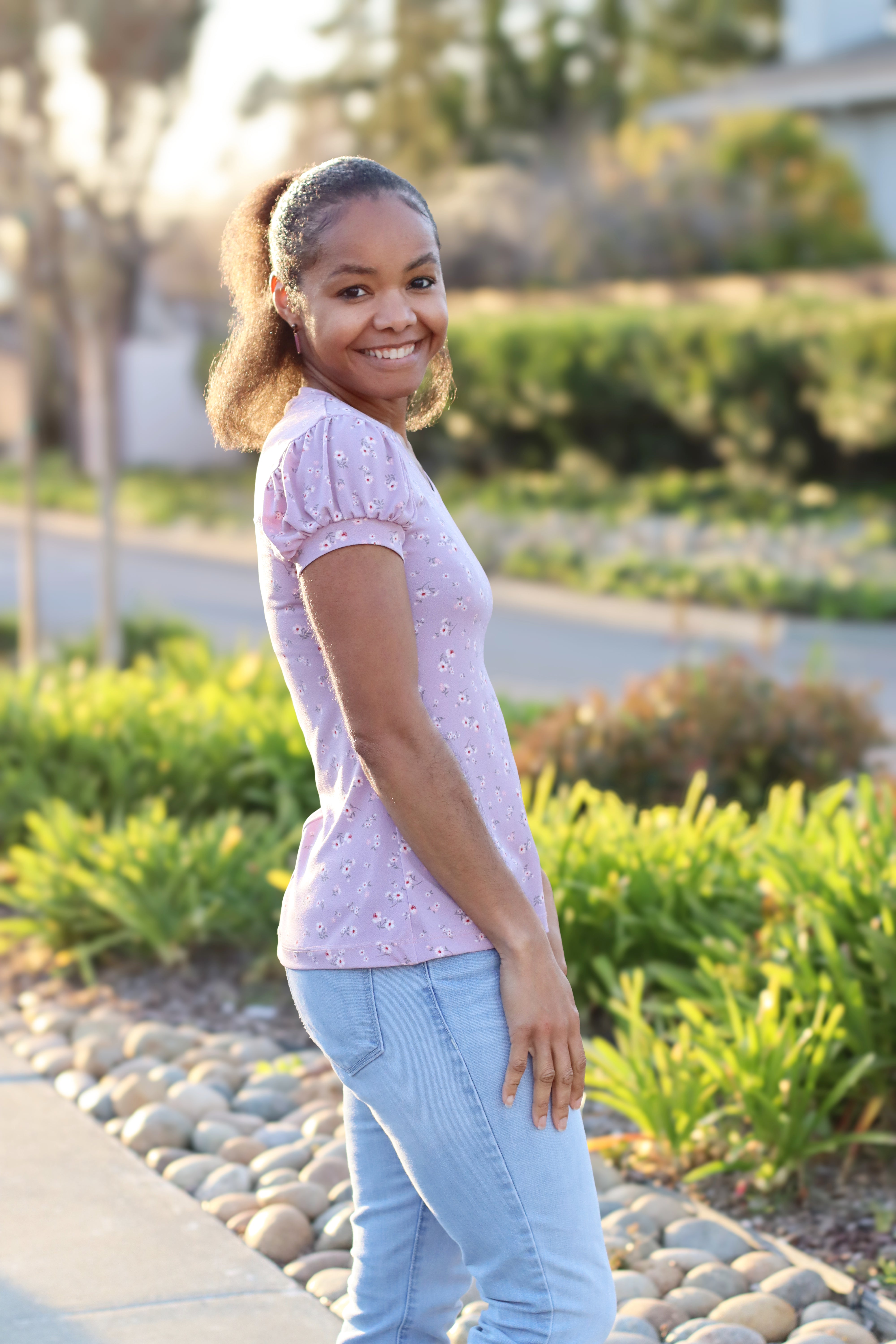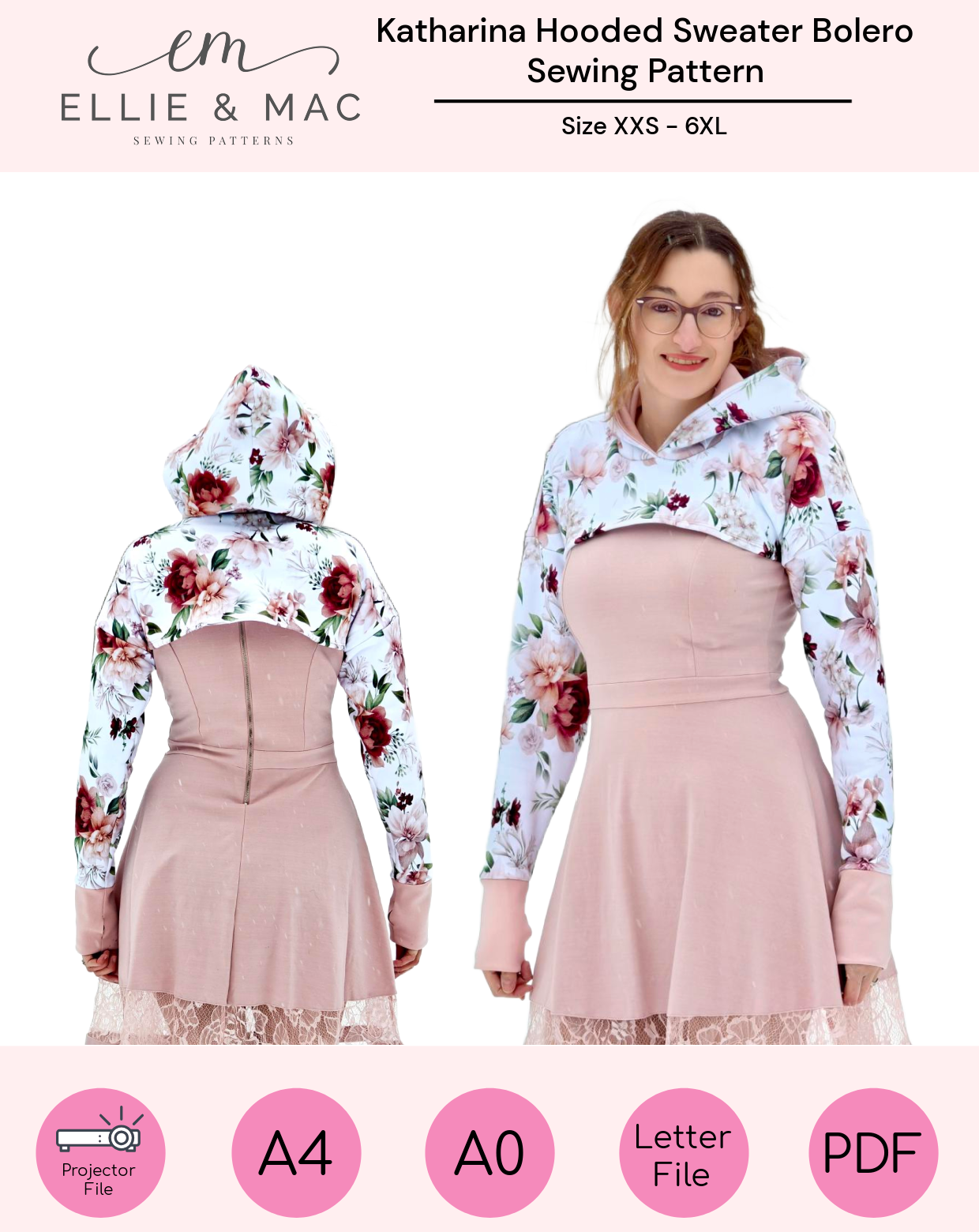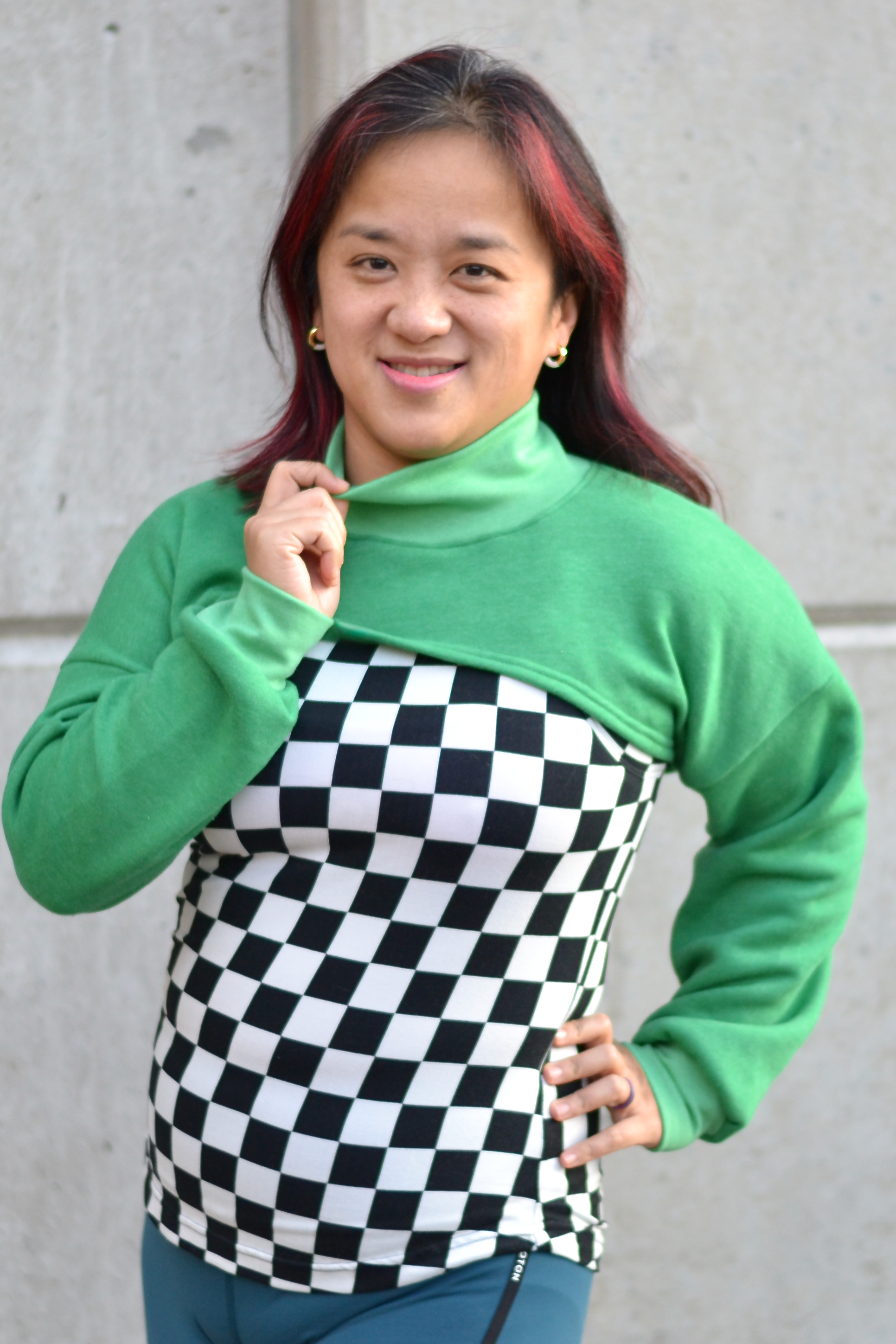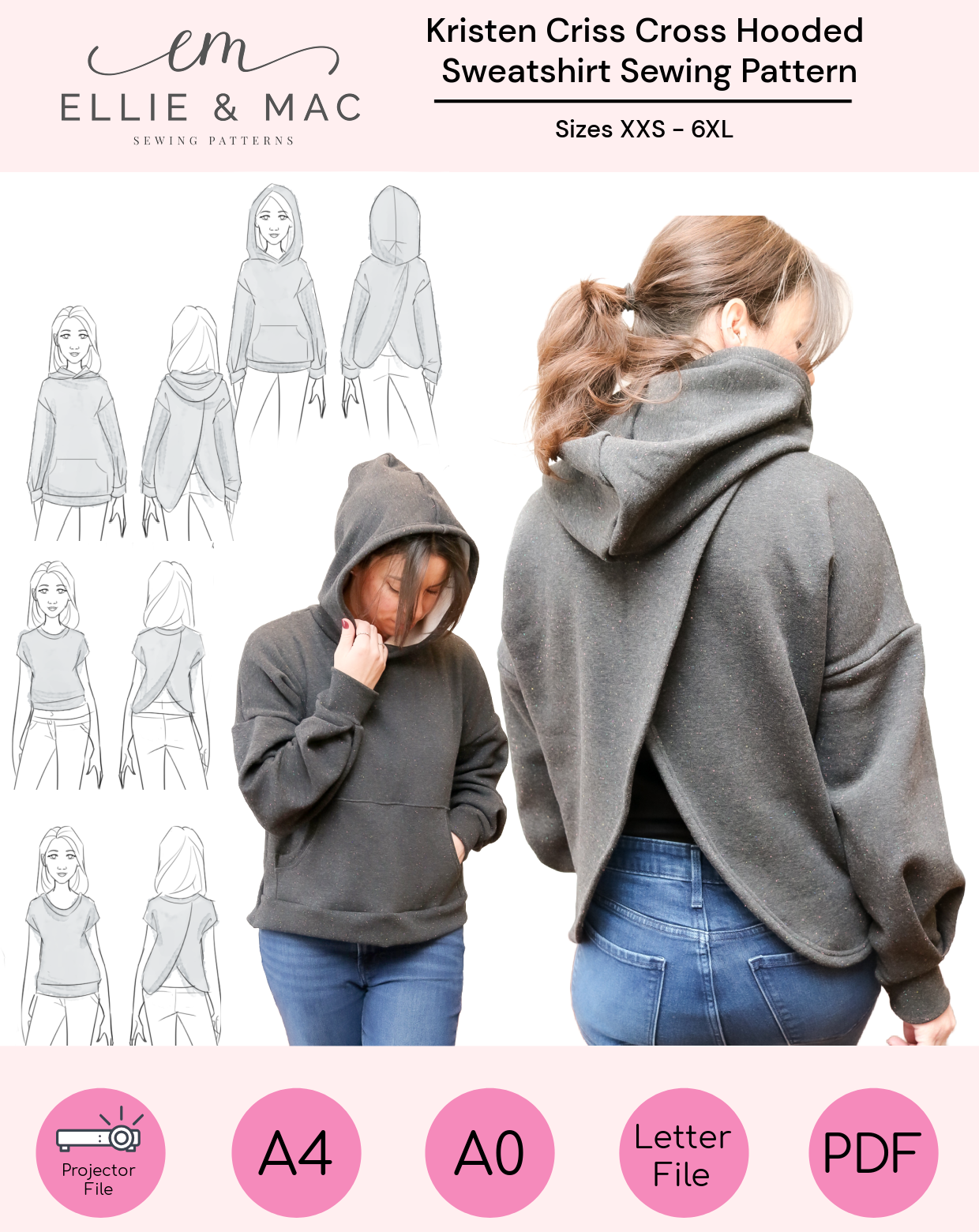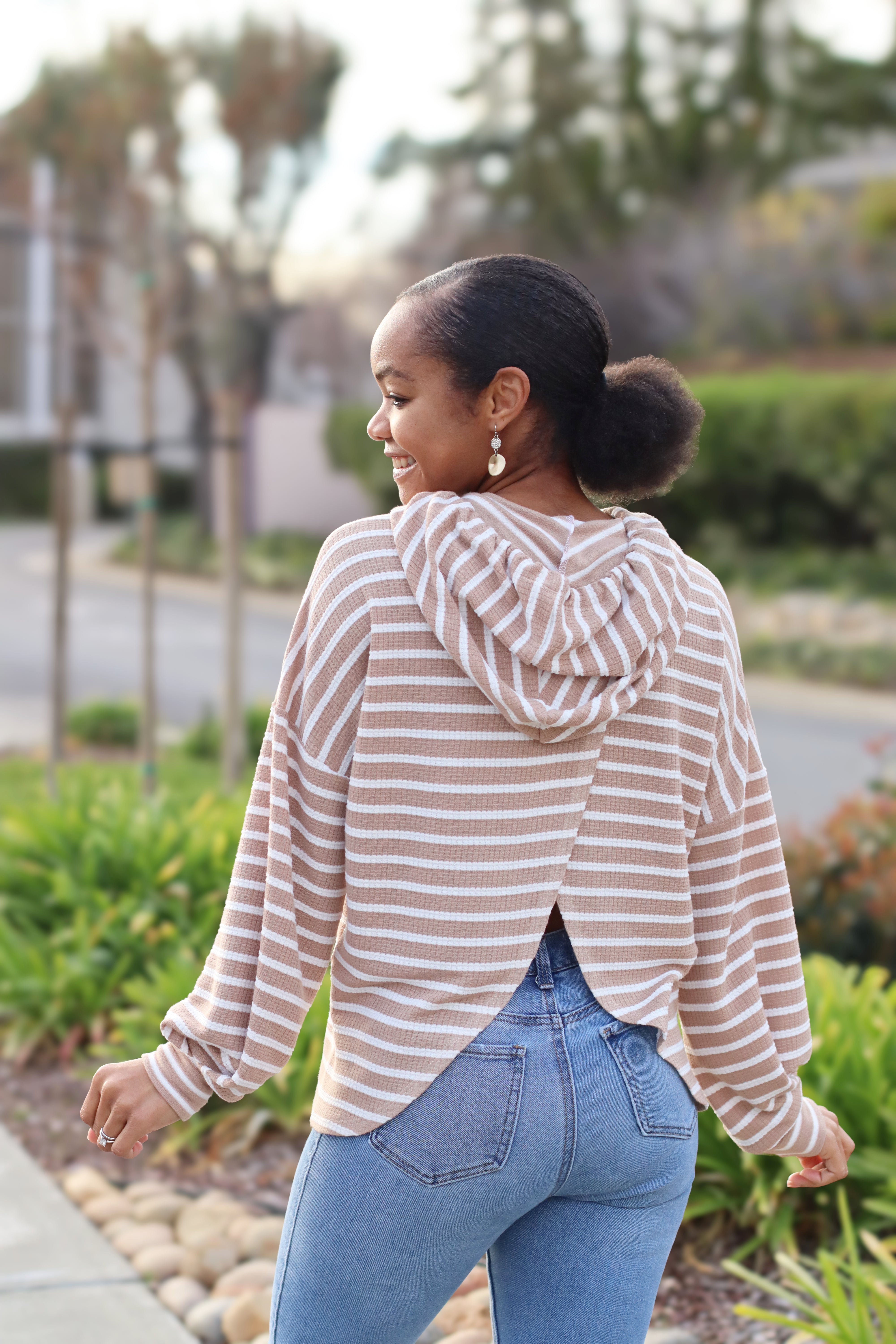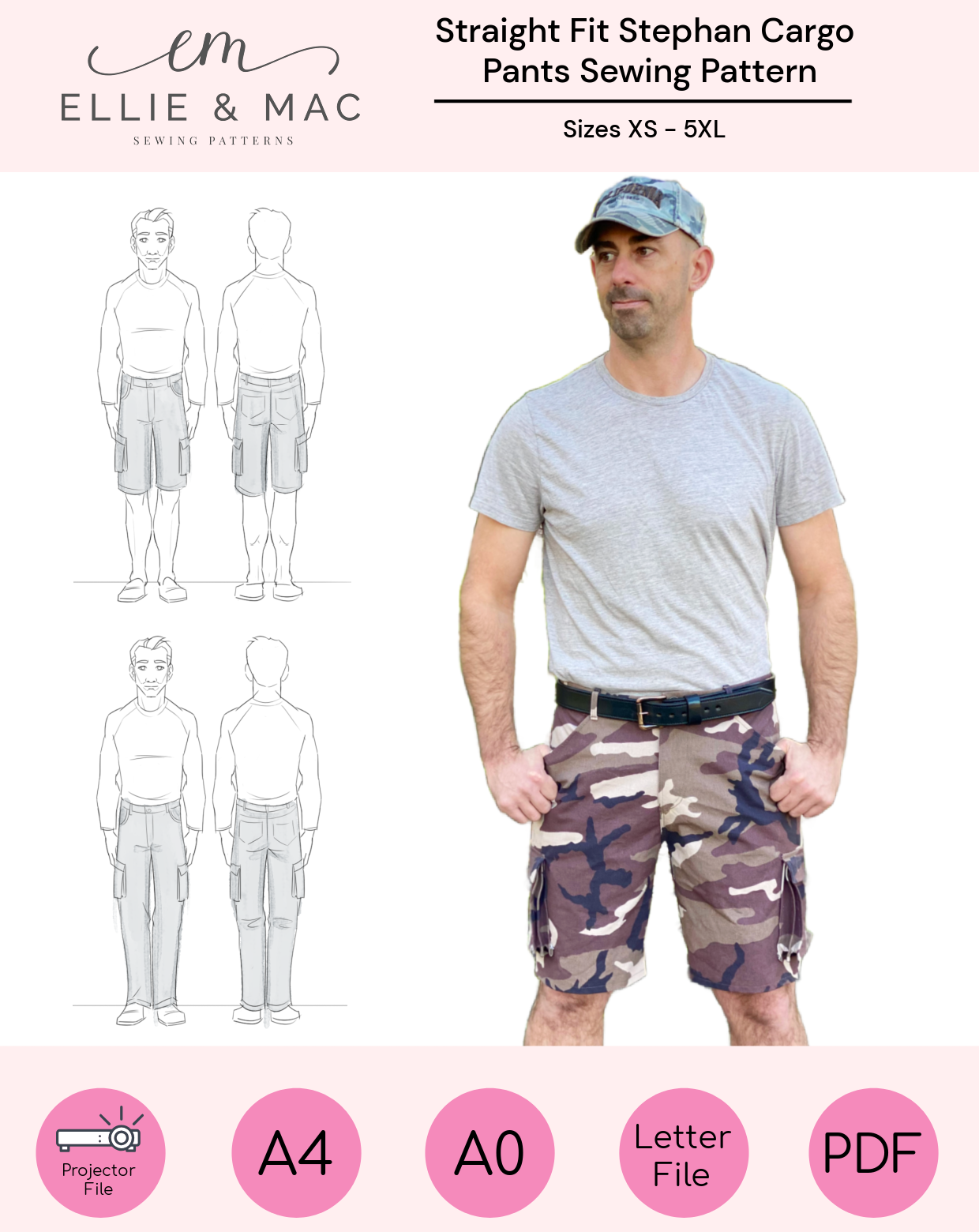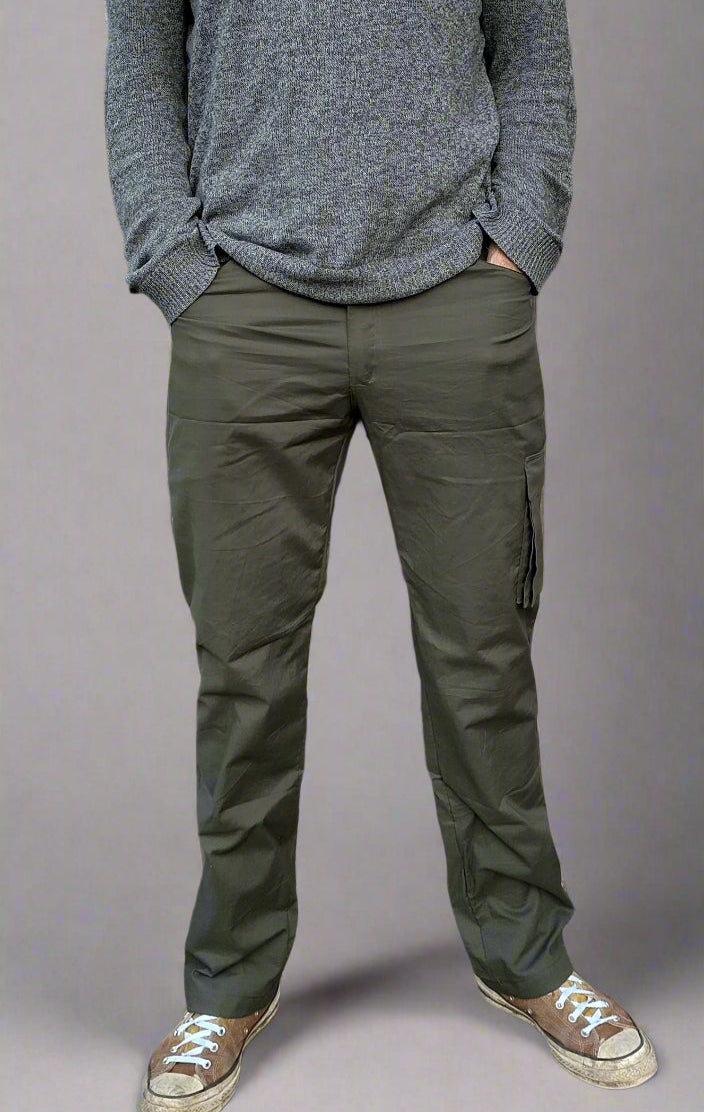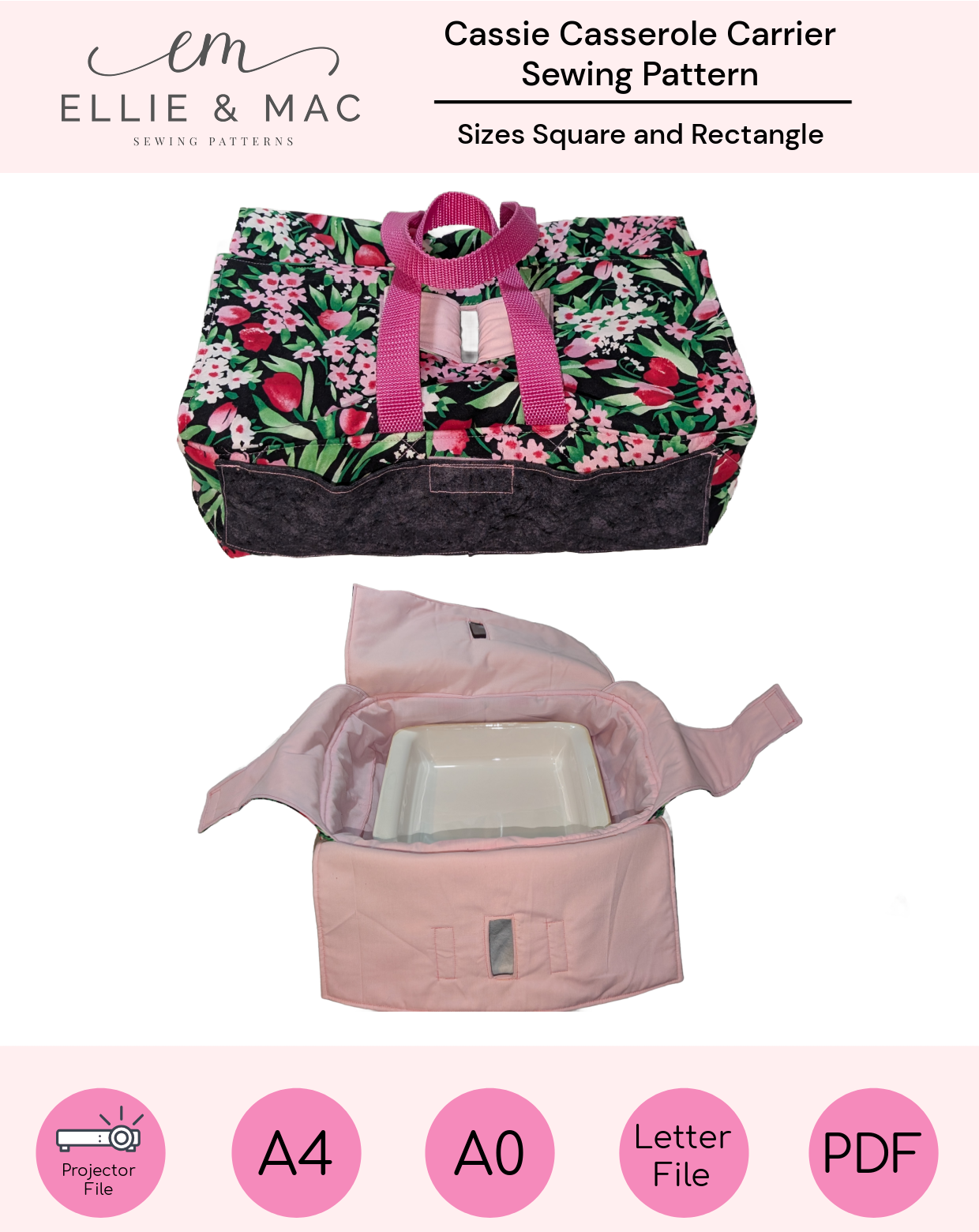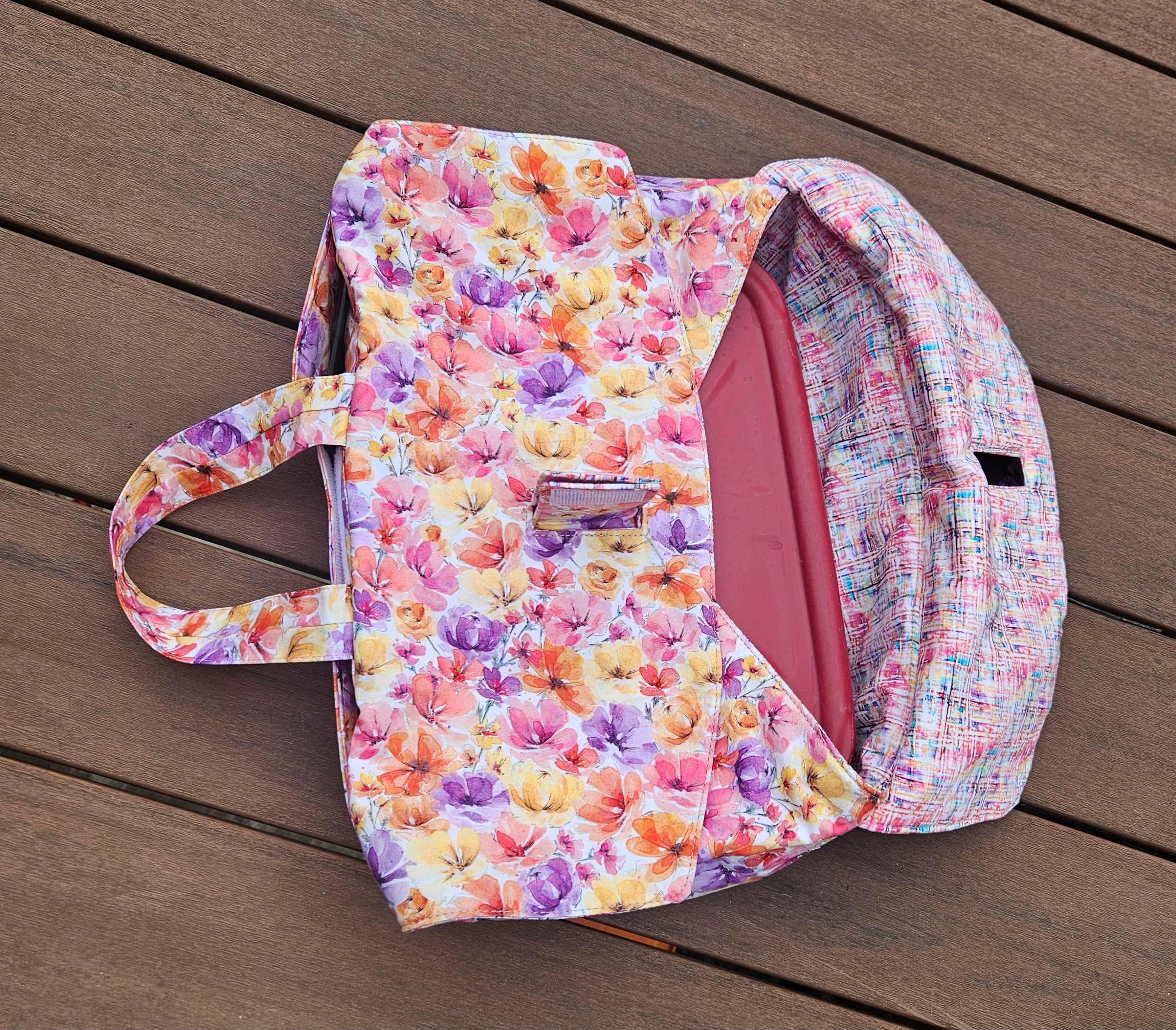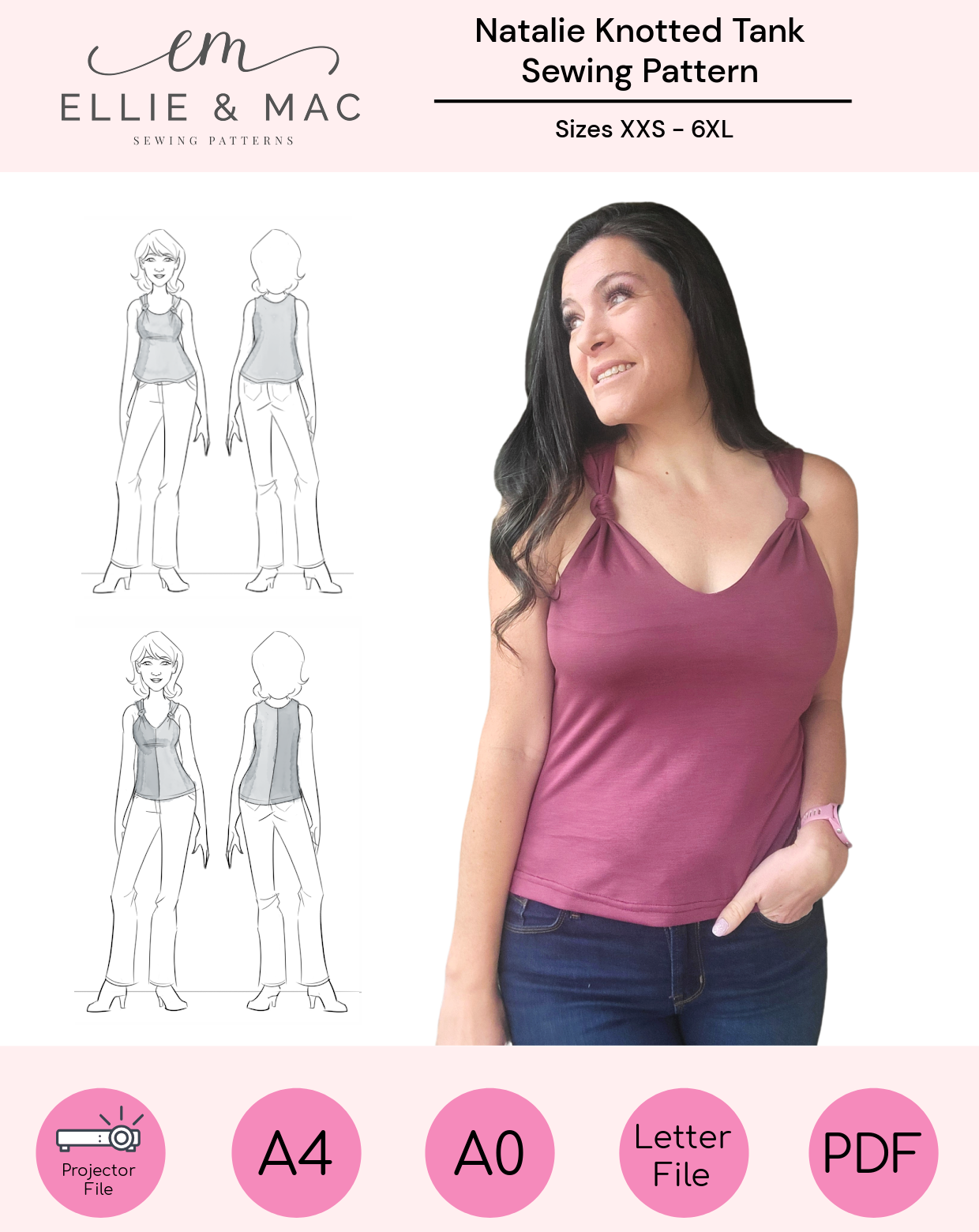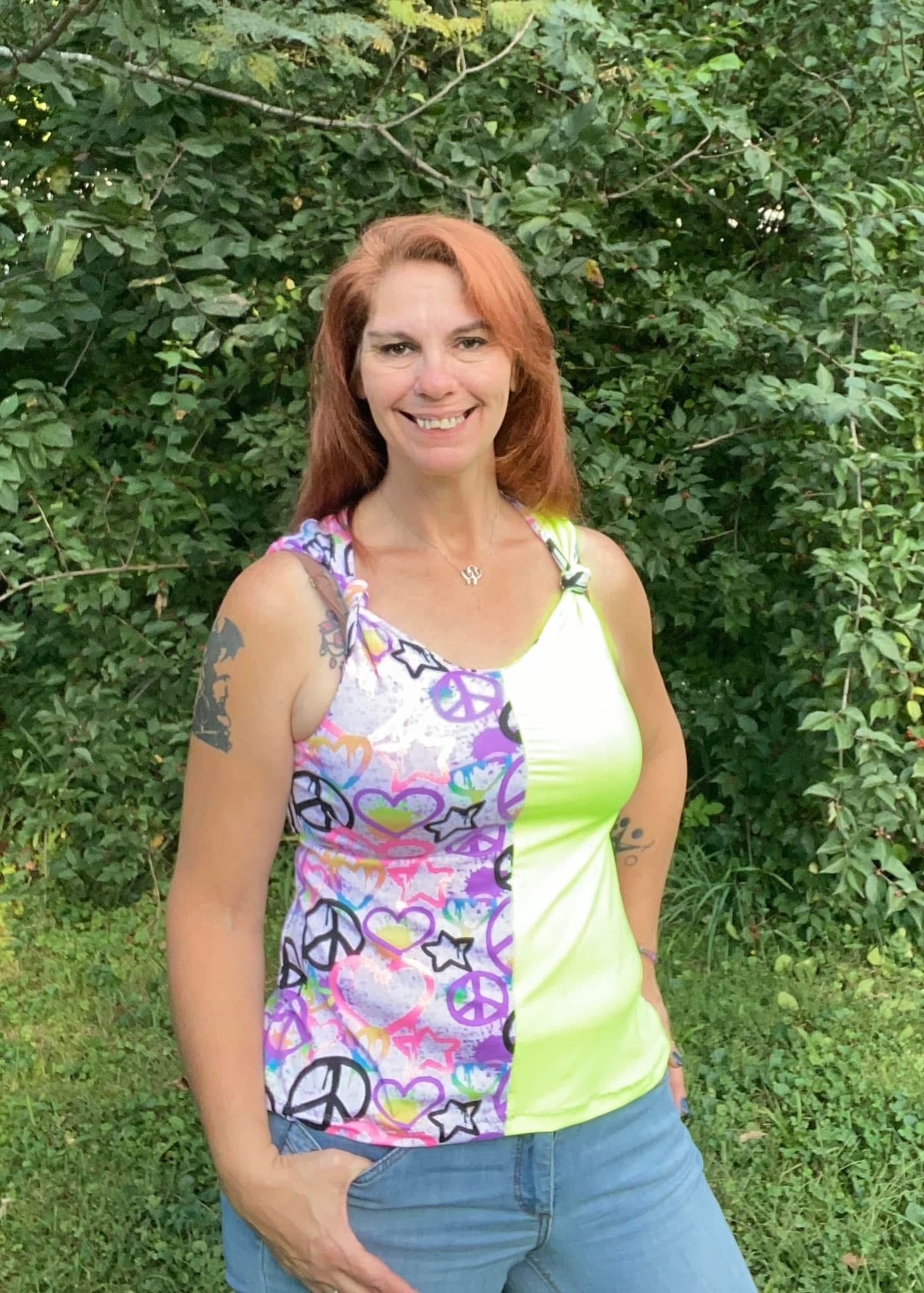Hello everyone! It’s Nellie from sewmessy.blogspot.com! I am guest blogging here at Ellie and Mac today and we are going to talk about a tough topic today. PANTS! Pants are pretty tough to sew and have them look perfect. Many people become discouraged and disheartened when sewing their own pants because there are so many things that can go wrong and there are so many kinds of alterations that can be done that it is overwhelming. Where do we even start?
First, we are going to start with a great pants pattern. The new Adult’s Good Vibe Joggers And these joggers are AMAZING!! Check out those adorable zipper pockets! And your choice of waist band? SA-WEEEET!

Yay for Joggers!!

But, in order to not be disappointed, we are going to need to make some adjustments.
I want to point out that I am not an expert at pant adjustments, I just have a lot of alterations I have to make on my patterns to get them the fit right and have done a lot of research to figure out what and why and how each alteration is done. I have enough research behind me that I feel fairly confident I can help out. Second, I want to point out that sewing is not a science, so what works for one person may not work for another, and not every adjustment will need to be done the same way. It is important that you know and understand your body and how it looks and feels to get the adjustments correct. Third, I want to mention that we are using knit fabric for these pants, so the stretch percentage, drape and recovery are going to make a HUGE difference in the look of each pair you make, so unless you are using the EXACT same fabric (even a different dye lot can make a difference) for every pair of joggers, you will get a slightly different fit with each pair. Don't let that discourage you! But do try everything in your power to use exactly the fabric and materials that the instructions require, at least with your first pair, it will help make your adjustments more consistent, comfortable and beautiful.
To begin we first need to start with the correct size. You will choose your size based off your full hip. That's the widest part of your tush! If you are unsure if you are getting the proper measurement, there is a link to the Ellie & Mac blog post on measuring HERE. You will need to grade between sizes for your thighs and calf. Those measurements are found in the instructions and on the pattern as well. Make sure you make those changes as smoothly as possible. A quick jog (haha, sorry for the pun) between sizes will make the pants fit funny.

Basically, you are going to play dot-to-dot. Make dark dots on all the sizes and places you need them and then draw a thin line going from dot to dot and then go back and make the lines contour just like the pattern. Begin with your hip at the hip point and go down to the ankle. If you need to go up or down a size above the hip, do that little bit last so it doesn’t get too confusing when trying to grade for your hip (see the pictures above), really the most important part for that is that your band/elastic is the correct size but if you are going up or down more than 1 size, grading the pattern will help with the fit.

You need to adjust for height next. But you aren’t going to use your height, so throw that number out the window for a moment. You are going to adjust for your INSEAM! And we are going to take your inseam in two parts. First measure your upper inseam from crotch to middle of the kneecap. Get someone to help you measure because as you lean over to read your measurement your body is going to move and the measurement will change and if you don’t have an accurate measurement your pants will not fit correctly. This time around I am measuring my daughter, mostly because she had no idea what I was talking about with all these different measurements!

We will call this length X. You are going to need your size graded pattern for this next step. It has to be your pattern and your size or the measurements will be off. Mark off the ¼ inch seam allowance in the crotch point and measure from the bottom of that seam allowance to the knee mark, that will be length Y. Take your length X and minus the pants length Y.
X - Y = ADJUSTMENT AMOUNT
X = your crotch to knee measurement
Y = pattern crotch to knee measurement minus seam allowance
If the resulting number is positive, that is how much you will need to add above the knee. If the resulting number is negative, that is how much you will need to remove above the knee.
ADJUSTMENT AMOUNT < 0 remove amount above knee
ADJUSTMENT AMOUNT > 0 add amount above knee
For example, if your crotch to knee measurement is 12 inches and the pattern’s crotch to knee measurement is 14 inches. 12 - 14 = -2 < 0 therefore 2 inches need to be removed from above the knee.
Another example, if your crotch to knee measurement is 14.75 inches and the pattern’s crotch to knee measurement is 14 inches. 14.75 - 14 = .75 > 0 therefore .75 of an inch needs to be added above the knee.
If you have more then one inch to add or remove use multiple cuts to do it, so that intended fit and design doesn’t become too distorted. If you are making the shorts length, you wont need to do this unless you have very short thighs (like need to remove more than 3 inches above the knee) or are changing the desired place you want the shorts to hit. By general rule of thumb, you should add or remove only in chunks less than 1 inch, so if you need to add 1 ½ inches cut straight across in two places and add ¾ of an inch in each place instead of 1 ½ inches from one place. I have to remove 4 inches from the upper inseam and I split the leg roughly into 4 and remove an inch at the “shorts” line, at the “lengthen/remove” line, right above the knee and at an arbitrary place between the last two lines.
You are now going to do the same for the bottom half of your inseam. Measure from the middle of your kneecap down to your ankle.

Your knee to ankle measurement is called length V. And here is where we will get a little bit complicated. You have to subtract the cuff and seam allowances from length V. If the cuff is 6 inches tall, minus the seam allowance on both sides is 5.5, fold the cuff in half and you get 2.25. Minus the seam allowance at the bottom of the pants is ¼ inch. So, you have to minus 2 ½ inches from length and you get W.
V = leg length from knee to ankle
((cuff width - seam allowance X 2) / 2) - seam allowance = W
Then measure the pattern from the knee point down to the end, that is length Z. Do the math again.
(V - W) - Z = ADJUSTMENT AMOUNT
ADJUSTMENT AMOUNT < 0 remove amount below knee
ADJUSTMENT AMOUNT > 0 add amount below knee
For example, if your knee to ankle measurement is 13 inches and the cuff pattern is 5 inches tall and the pattern knee to bottom measurement is 14. Begin by subtracting the seam allowance on both sides of the cuff giving you 4.5 and 2.25 when folded in half. Minus the seam allowance for the bottom of the pants and you get 2 inches. So 13 - 2 = 11 - 14 = -3 < 0 therefore 3 inches would need to be removed from below the knee.
Another example, if your knee to ankle measurement is 12.5 inches and the cuff is 6.5 inches tall and the pattern knee to bottom measurement is 8.5 inches. Begin by subtracting the seam allowance on both sides of the cuff giving you 6 inches and 3 inches when folded in half. Minus the seam allowance for the bottom of the pants and you get 2.75 inches. So 12.5 - 2.75 = 9.75 - 8.5 = 1.25 > 0 therefore 1.25 inches would need to be added below the knee.
If you need to add or remove more then 1 inch, remember to do it multiple sections. This will help to keep the intended fit and design of the pattern in place. You will probably have some jagged edges and lines that don’t line up, that’s okay, just smooth out the lines making the pattern look as close to the original as possible. You may need to add more paper to the edges of your pattern so that your don’t narrow the pants too much while smoothing out the edges. A good way to make sure you are not adding or removing too much ease is to draw the new pattern lines to go between the old ones.
If you are doing the capri length joggers you are going to divide your adjustment amount in half, because your calf is halfway between your knee and ankle and still has a cuff. Be sure that you add or remove your adjustment amount above the capri line.
One more adjustment we need to talk about, the rise. This one seems a lot more scary than it really is.
You can do this!
The rise is how much your pants come up from the crotch point. It is measured from the bottom of your back waistband through your legs and up to the bottom of your front waistband. The most simple way to find this amount is to wrap your pants waistband around you waist (just a note, even though you are basing your jogger size off your hip you still need to use your waist measurement for your waist band!) If you are using the yoga band, it’s pretty easy to cut it out and sew it up and put it on, just make sure you account for the seam allowance when you figure the rise amount (hint: you will subtract the seam allowance here). Similar with the elastic, use the width elastic required by the pattern and cut it to the length you need, but you wont need to account for the seam allowance this time because there shouldn’t be any.
Adjust the band so that it sits at the proper and comfortable place on your waist for the lower or higher band position. High rise usually sits right across the belly just beneath the belly button where as low rise is usually more like right across the hip bones. Now take a measuring tape and hold it to the bottom of the waistband/elastic in the back.

Now don’t feel too silly, but do a little squat (so you have room to move in your own pants!) make sure the measuring tape is still in the proper place in the front and is able to shift slightly with the squat. Now look in a mirror, or mark the tape with your fingers or get some help, or something that will help you be accurate, because if you bend to look at the rise measurement you will shift the tape and your numbers will be off. Now you have your rise length!
The basic formula for figuring how to adjust is this, divide your total rise in half. Minus 1 inch from the first half and this is the front rise. Add 1 inch from the second half and this is the back rise.
Total Rise / 2 = Half Rise
Half Rise - 1 = FRONT RISE
Half Rise + 1 = BACK RISE
For example, if your total rise is 20 inches you divide that number in half, so 10 inches. Subtract 1 inch from 10 and the front rise would be 9 inches. Add 1 inch to 10 and the back rise would be 11 inches.
This is a generic measurement and will not work for everyone, remember, sewing and fitting are not a hard and fast science and what is general may not be what is correct for you!
Here are a few more ways to get more specific on exactly how much needs to be adjusted and where, the first is to make a muslin and pinch out extra fabric (if you have some) or decide how much needs to be added or removed (if any), this is great if you’ve already made a muslin and realise something is wrong. And as long as you need to remove from the rise you can continue to use your muslin, just remove from the top the amount that needs to be removed and recaluculate the band, because when fabric is removed directly from the top of the pattern it changes the design and the original band probably won't fit quite the same. But, for the next pattern use a similar fabric and be sure to change the rise similar to the amount you pinched out and you should get pretty close to getting an accurate adjustment to the rise. Also, this method doesn’t work if you need to increase the rise.
The second way to learn how much to adjust the rise by is to use a flexible curve ruler, or I’ve seen people talk about using tinfoil to measure the crotch curve, this is the same idea, only we are measuring just the rise here, not discovering the shape. You need a flexible curve (or tin foil) and three rubber bands or small clips could probably work too, it’s a whole lot easier if they are easy to move!

(I realise I have spelled flexible incorrectly on the photo above, but I didn’t catch it before I hit save and I didn’t feel like redoing the whole picture. My apologies, please enjoy the giggle!)
Put one end at the bottom of the waistband and again go through your legs and up to the front. Mark where your center seams will line up in between your legs. Give a little squat, double check the center mark because it could shift in the squat, and mark the front!

This is a more accurate measure of your rise because it tells you where your crotch point should line up. You should have a measurement now for front and back with the center clearly marked! If you are using tinfoil, you will need to measure the distance between each rubber band to get your front and back rise amounts, whereas the flexible ruler has a ruler on it, if you remember to use it the correct direction (ask me how I know this). This is also a great way to get the shape of the crotch curve, but I won’t be going into that at this time.
Another way to measure this without getting a shape of the crotch curve is create a frankensteined ruler with a plumb, or basically to take two measuring tapes and create your own ruler that has the center marked at zero for both tapes with a long string with a weight at the bottom.

Basically, you will do the exact same thing as before with the tape from the bottom of the back elastic, through the legs and back up to the bottom of the front elastic, the string with the weight at zero will hang from your center and you will know it is in the right place when it hangs straight down. Do a little squat, make sure the weight is still straight. Take those measurements, it should be pretty easy and no math involved because your center point will be at zero already.

So that is how to find the rise you need, but how do you know how much rise the pattern has? First you need to print the pattern and grade for size and adjust for height, then you are going to take your two pattern pieces and lay them down with the front and back rise together, overlapping at the seam allowance. In the pictures below I have traced out the seam allowance on both pattern pieces. You have to remove the seam allowances from your measurements because your body doesn’t have any seams and it’s just easier to have them marked so you don’t have to risk messing up the math. The center point will be marked (where your pieces overlap) so the front and back rise should be easy to distinguish.

If you need to add or remove by the same amount for both front and back, just cut your pattern somewhere between the crotch curve and the top of the pants and either spread or overlap by the needed amount and redraw the crotch and side curve smoothly.


If you have to add/remove an unequal amount from the front and back you need to make sure you add the correct amount to the side seam of the pants. This amount is found by splitting the difference between the front and back in half and add that amount the sides. So, for example, if you need to add 2 inches to the back and 1 inch to the front you would adjust the rise at the sides to add 1.5 inches, creating a kind of wedge shape.

In the pictures on the left above I have marked where the amount needs to be removed and would fold the wedge up to remove, but the pictures on the right show a wedge being added to the pattern, the smoothing and repositioning of the zipper needs to be addressed for both adding and removing.
If you need to do something similar to what I do and add to one side and remove from the other, you will make your sides rise at 0, so you will use more of a wedge shape when you add and remove.


One last thing when you are adjusting the rise, this is going to distort the crotch curve, as you have seen in all the pictures I’ve shown you with reminders smooth your seams. These distortions will be less drastic if you make small adjustments. So when you have to remove, split the amount you have to remove over multiple spots. So if you need to shorten the rise in the front by 2 inches, making small 1 inch adjustments so that the crotch curve isn’t deformed quite as dramatically will probably make your happier than a larger 2 inch adjustments. The same goes with increasing the rise. I tried to make my examples show smaller adjustments that required smaller amounts of redrawing, but there will be times when you need to make large adjustments, just make the adjustments in smaller increments and the seams will be much easier to smooth over. And if you have to adjust enough that your outer seams begins to become disfigured, you may have to redraw it slightly so that you don’t create a concave area on your hips.
Okay, I think I have covered most of it! I am so sorry there is so much information! And these aren’t even half of all that there is! But I think this is a great place to start. These adjustments will really help with the look and fit of your joggers! Thank you so much for allowing me the chance to teach you, and hopefully we can all create some smashingly fitting joggers!! Oh, and please, please share your picture with me on the Ellie and Mac Facebook page!
The links included in this post are affiliated links where I will receive a small commission at no extra cost with your purchase, thanks!



